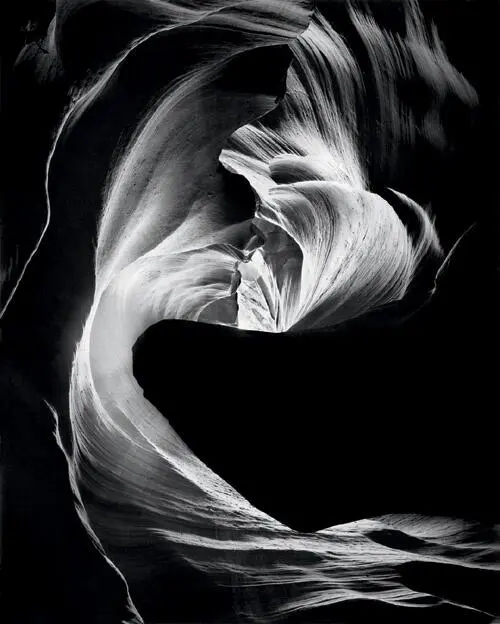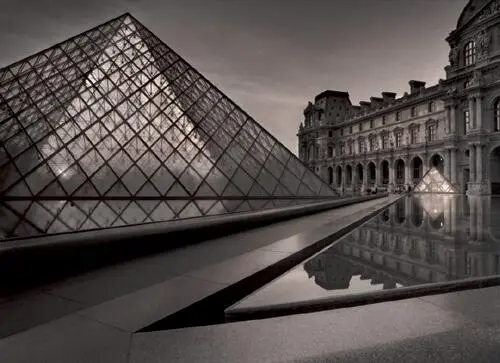Bruce Barnbaum - The Art of Photography - An Approach to Personal Expression
Здесь есть возможность читать онлайн «Bruce Barnbaum - The Art of Photography - An Approach to Personal Expression» весь текст электронной книги совершенно бесплатно (целиком полную версию без сокращений). В некоторых случаях можно слушать аудио, скачать через торрент в формате fb2 и присутствует краткое содержание. Жанр: Старинная литература, на английском языке. Описание произведения, (предисловие) а так же отзывы посетителей доступны на портале библиотеки ЛибКат.
- Название:The Art of Photography: An Approach to Personal Expression
- Автор:
- Жанр:
- Год:неизвестен
- ISBN:нет данных
- Рейтинг книги:5 / 5. Голосов: 1
-
Избранное:Добавить в избранное
- Отзывы:
-
Ваша оценка:
- 100
- 1
- 2
- 3
- 4
- 5
The Art of Photography: An Approach to Personal Expression: краткое содержание, описание и аннотация
Предлагаем к чтению аннотацию, описание, краткое содержание или предисловие (зависит от того, что написал сам автор книги «The Art of Photography: An Approach to Personal Expression»). Если вы не нашли необходимую информацию о книге — напишите в комментариях, мы постараемся отыскать её.
The Art of Photography: An Approach to Personal Expression — читать онлайн бесплатно полную книгу (весь текст) целиком
Ниже представлен текст книги, разбитый по страницам. Система сохранения места последней прочитанной страницы, позволяет с удобством читать онлайн бесплатно книгу «The Art of Photography: An Approach to Personal Expression», без необходимости каждый раз заново искать на чём Вы остановились. Поставьте закладку, и сможете в любой момент перейти на страницу, на которой закончили чтение.
Интервал:
Закладка:
Diagonal lines have powerful compositional effects because of their inherent instability. They create tension. They are not stabilized in either a standing (vertical) position or a reclining (horizontal) position. In effect, diagonal lines are in the process of falling, which gives them powerful dynamics. Both vertical and horizontal lines possess a reduced feeling of dynamics but a heightened feeling of permanence or stability (or even a static feeling, if used in an uninspired manner). Curved lines, too, can be very dynamic or quite relaxed. Tight curves tend to carry more drama than wide, sweeping curves.
Of course, these tendencies must be considered in combination with other compositional elements. Dominant diagonal lines in a low contrast print may appear to be less dynamic than horizontal or vertical lines in a high contrast print. As each element of composition unfolds in this discussion, it must be considered in relationship with the others (more about this toward the end of this chapter), and ultimately in context with the subject to make real sense. The value of understanding the elements of composition in their pure, abstract form is to ultimately match them with the subject and strengthen the statement you are trying to make.

This was my first slit canyon photograph. I did not see it as a canyon of eroded sandstone, but as a floating site in space-time surrounded by cosmic forces. The central black form (a black hole, perhaps?) is surrounded by tightly curved bright lines that grow dimmer as they move away from the center of the image. The eye is immediately drawn toward the central area because of its high contrast, and then spirals outward from there.
Figure 3-6. Circular Chimney, Antelope Canyon

The fallen giant creates a strong movement from lower left to upper right, with the branches in the lower right corner mirroring that angle. Remove the fallen sequoia, and the scene has stately grandeur but is not dynamic. The brightest portion of the print has just a bit of tonality to it, revealing fog; the darkest portion is just as black as the deepest black in Figure 3-6, yet the image is not high contrast because the tonal extremes do not come in contact. Much of the image is dominated by middle gray tonalities. Contrast is not determined by the range of tonalities, but by their juxtapositions.
Figure 3-7. Fallen Sequoias
Two examples will help illustrate the points made so far. Figure 3-6 directs the eye to the center of the image, where contrast is greatest; the deepest blacks come directly in contact with the brightest whites, and the curving lines are tightest. From there, the eye spirals rapidly outward from the high-contrast, inner curves toward the lower-contrast, outer curves. The combination of high contrast and curved lines makes this image very dynamic.
Figure 3-7 is dominated by the strong diagonal of the fallen tree and its repeated angle in the cluster of branches at the lower right corner that contrasts with the standing trees behind. In this image, the standard associations of vertical and diagonal lines hold true. Remove the diagonal fallen tree and logs, and the photograph becomes one of a primeval forest in fog, strong and permanent, but surely not dynamic.
There is nearly a full tonal range in the print, but it does not have high contrast. The standing trees recede gently into the enveloping fog (which is light gray, not pure white), while light and middle grays dominate the image—except for the upper part of the fallen tree and the branches below, which attain dark grays and blacks. This serves to add three-dimensionality to the image and impart a sense of presence.
Do straight or curved lines have the same emotional feel as jagged lines with pointed edges? Surely not. Do sweeping curves have the same emotional feel as a series of vertical, straight lines? Again, no. Try to fit various types of subject matter into the abstract line structures just mentioned to see how the line structures you envision work with the subject matter. (This can, of course, include curved lines as well as straight lines.)
There are no rules for the emotional connotations of any specific type of line. In conjunction with the subject and other compositional elements, such as contrast and tone, lines can help determine the overall mood of a photograph. In portraiture, often the slight turn of a head can change a straight, stern facial line into a softer, mellower line—and vice versa. Carefully placed and controlled lighting, either harsh or soft, can further accentuate either effect. So the astute portrait photographer thoughtfully controls the angle of the head in relation to the lens of the camera, where and how the hands are placed, the clothing that is worn, where lighting is placed, and the type of lighting used (whether ambient or artificial) to help convey his or her feelings about the person in the portrait.
Be aware of strong lines that pull the eye out of a photograph. Perspective lines, in particular, can often be the culprits, for the eye will follow the line to the edge of the photograph and beyond. Before you know it, you have lost the viewer. Surely you want to hold your viewer’s attention, so strong lines must be carefully controlled.
On the other hand, beware of reading lines into a photograph when they exist too faintly or not at all. A photograph often turns out poorly because the photographer overestimated the continuity of lines, particularly when the alleged line ran through several objects, such as a plant and its shadow. Reading weak lines into a photograph is much like reading nonexistent moods into a photograph: it never works.
One other subtlety of line structure should be noted: not every line has to be a continuum, like the vertical trunks or diagonal log of Figure 3-7, or the sweeping curves of Figure 3-6. Some lines can consist of a sequence of forms that closely relate to one another. In such cases, the eye will create an unseen line as in the “connect the dots” drawings we played with as children. Sometimes such lines can be very fascinating, indeed. They can also create problems. For example, a series of forms might not relate to one another in a scene because they are of different colors. However, if they are translated into gray tonalities in a black-and-white photograph, they suddenly relate to one another quite strongly. In some cases, the line may prove to be highly beneficial to the composition, but in other cases it may seriously distract the viewer from the photographer’s intended vision.

The dominating forms in this image are the clean triangles of the pyramid (the entry to the museum) and the shapes created by the walkways. These forms also provide a visual counterpoint to the ornate architecture of the old palace. The print is toned to brown to subtly enhance its mood at dusk. (Note the setting sun through the pyramid’s glass.)
Figure 3-8. The Louvre, Dusk
Form
Simple geometric forms—triangles, circles, rectangles, etc.—create strong designs. Repeated use of these forms and variations of them can add further strength to compositions, especially if there are variations among them in size, tonality, color, texture, or orientation. Of course, forms don’t have to be geometrically simple to be eye-catching when repeated. The forms can be oddly shaped, but seen repeatedly they become visually attractive... so much so that they may become the most visually attractive aspect of the image.
Читать дальшеИнтервал:
Закладка:
Похожие книги на «The Art of Photography: An Approach to Personal Expression»
Представляем Вашему вниманию похожие книги на «The Art of Photography: An Approach to Personal Expression» списком для выбора. Мы отобрали схожую по названию и смыслу литературу в надежде предоставить читателям больше вариантов отыскать новые, интересные, ещё непрочитанные произведения.
Обсуждение, отзывы о книге «The Art of Photography: An Approach to Personal Expression» и просто собственные мнения читателей. Оставьте ваши комментарии, напишите, что Вы думаете о произведении, его смысле или главных героях. Укажите что конкретно понравилось, а что нет, и почему Вы так считаете.












